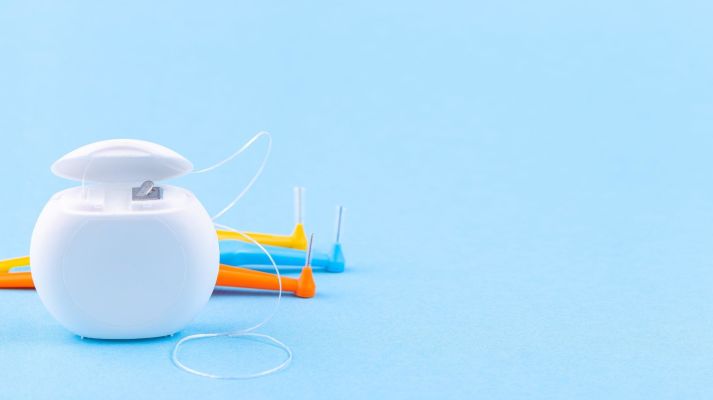
Flossing vs Interdental Brushes

We wanted to quash the rumours and limited research that disregards the efficacy of flossing as part of your dental routine, so we thought we had better tell you a little bit about interdental cleaning and why it’s really important.
Why brushing alone is not enough to prevent tooth decay
Interdental cleaning is vital because it finishes what your toothbrush started. Whether a regular manual or an all-singing-all-dancing electric, a toothbrush can only reach three of the five surfaces of the tooth. This means that if you don’t use anything in between the gaps, you are missing up to 35% - yes, 35% - of your tooth surface EVERY DAY.
This can lead to plaque deposits and food debris trapping in between your teeth and, if left undisturbed, can lead to dental decay and/or gum disease (and you know how we feel about that here at Life Dental & Wellbeing!). To prevent this from occurring, we recommend that you use either dental floss or interdental brushes daily, depending on what fits in the gap.
Flossing vs Interdental: Which is better?
Put simply, if the interdental spaces are large enough, then it’s best to use an interdental brush as they tend to be easier to use and better at navigating orthodontic devices, such as braces and wires
However, if space is too tight, then use floss. You may need a selection of differently sized brushes and floss, depending on your mouth – everyone is different!
How to use dental floss
There are many types of dental floss available on the market – floss tape, floss string, floss picks, floss with mint flavouring, floss with fluoride – it could sometimes get confusing which to choose. The best bet is to use the floss tape/string as it’s easier to manoeuvre around the tooth effectively.
- Unwind approximately 18 inches of floss and wrap it around each middle finger, so you can pinch the floss between your thumbs and index fingers (you should have about an inch to work with)
- Hold the floss taut and gently slide in between the teeth, using a slow and steady ‘zig-zag’ or ‘back and forth motion until you reach the gumline (the ‘zig-zagging’ can prevent trauma if you should slip)
- Contour the floss around the side of the tooth making sure you access gently underneath the gum line, using a clean section of floss as you move around the mouth
- Use the same ‘zig-zag’ motion to bring the floss back up from between the teeth
- Don’t forget the very back teeth!
How to use interdental brushes
There are different brands on the market available, however the most well-known (and the brand we stock) is TePe. They offer a range of sizes and it is important to choose the right size brush to ensure the interdental cleaning is effective – you will often need more than one brush size for the different spaces in your mouth.
Your dentist or hygienist can help to select the correct sizes for you. It is important to avoid forcing a brush that is too large through the gap, but equally the brush needs to fit the space well with the bristles making contact with the teeth and gums to properly remove the plaque. The brushes are best changed weekly, or when the bristles become worn.
- It’s best to have a ‘finger rest’ as you guide the brush into space – this can help to prevent the brush from buckling or bending
- Insert the brush into the space between the teeth, turning slightly (this helps to prolong the life of the brush) then gently move the brush forwards and backwards – we recommend at least 8-10 times in each space.
- Accessing the back of the mouth is a little more challenging. Angled TePes can be easier, as they are designed at a right angle. If you use a smaller brush (pink, orange, red, blue) you can curve the ‘neck’ of the brush slightly. If you use the larger brushes (yellow, green, purple, grey, black) you can slightly curve the wire
- Other tips for the back of the mouth include accessing the interdental space from the INSIDE rather than the OUTSIDE. Get your hygienist or dentist to show you how to use them in the best, most effective way.
It is important to remember – if your gums bleed, do not stop flossing or stop using interdental brushes! Regular interdental cleaning and effective tooth-brushing should help with this and bleeding should stop after a week or so of daily use. However, if bleeding persists after one week of daily use, contact your dentist or hygienist.




